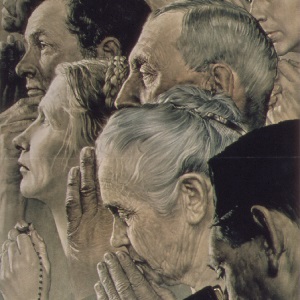in Writing to Read Democracy in New York State & The United States
Activity 5
Created by Prof. Seth Halvorson & Dr. Erica Kaufman
Bard College Institute for Writing & Thinking
NYS Common Core Grades 11 & 12:
United States History and Government Participation in Government and Civics
This document-based sequence of activities invites students to chart the dialog between the New York State Courts, the Federal Courts, and other State Courts regarding the scope of individual rights. Generally speaking, New York State Courts are more protective of individual rights than Federal Courts and more so than other State Courts as well. The central question is: How have the New York State Courts understood the scope of individual rights?
Many cases have been decided by the New York State Courts that address the tension between liberty and security. Article 1 of the New York State Constitution includes the protection of key individual rights, the freedom of speech and the freedom of religion. Section 3, specifically notes that “The free exercise and enjoyment of religious profession and worship, without discrimination or preference, shall forever be allowed in this state to all humankind; and no person shall be rendered incompetent to be a witness on account of his or her opinions on matters of religious belief; but the liberty of conscience hereby secured shall not be so construed as to excuse acts of licentiousness, or justify practices inconsistent with the peace or safety of this state.” Yet, as life in a multicultural and diverse democracy shows, religious freedom has limits. The state’s respect for an individual’s rights can conflict with government interests in security.
Using Rivera v. Smith to ground this discuss, students will debate this resolution — Resolved: When in conflict, the exercise of religious freedom ought to be valued above the security interests of the government.
This lesson plan meets the following guidelines of New York State’s Common Core Social Studies Framework (2017):
- Foundations of American Democracy: 12.G1d
- Civil Rights and Civil Liberties: 12.G2a, 12.G2b, 12.G2c, 12.G2d, 12.G2e
Lesson Overview PDF
IWT’s Core Writing (& Reading) Practices PDF
Classroom Debate Rubric PDF
Student Handouts PDF
The Historical Society’s website contains a wealth of related resources related to this unit.
Hon. Hugh R. Jones
Court of Appeals Judge
Wrote the majority opinion of Rivera v. Smith
Hon. Lawrence H. Cooke
Court of Appeals Chief Judge
Concurred with majority opinion
Hon. Matthew J. Jasen
Court of Appeals Judge
Concurred with majority opinion
Hon. Bernard S. Meyer
Court of Appeals Judge
Concurred with majority opinion
Hon. Richard D. Simons
Court of Appeals Judge
Concurred with the majority opinion
Hon. Sol Wachtler
Court of Appeals Judge
Concurred with the majority opinion
Hon. Judith S. Kaye
Court of Appeals Judge
Concurred with the result in a separate opinion
Image Citation: National Archives and Records Administration, World War II Posters, NAID 51537. Copyright held by Curtis Licensing, a division of The Saturday Evening Post Society.
Writing to Read Democracy: Document-Based Essay in Miniature
|
|---|

